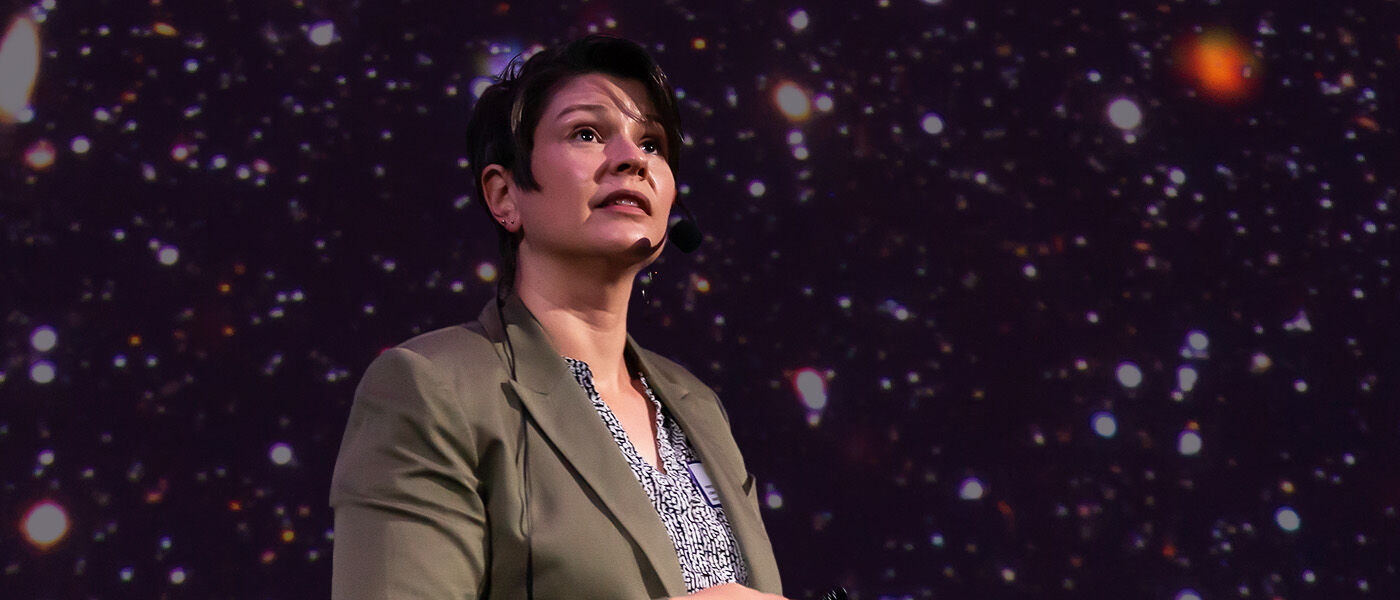Dr. Brooks Space Talk: Galaxy Formation and Evolution
On June 12th, 2025, Liberty Science Center hosted Dr. Alyson Brooks, Associate Professor of Physics and Astronomy at Rutgers University, for a new Space Talk: Galaxy Formation and Evolution.
When we look out into the universe outside of the Milky Way we find an almost uncountable number of galaxies. Each of these galaxies is unique, both in shape and size. From the most massive containing trillions of stars to the smallest, dwarf galaxies containing as few as 100 million stars. Studying how these galaxies form and evolve can help us solve some of the most fundamental questions facing astronomers today – and that is the work of Dr. Alyson Brooks.
During her Space Talk, Dr. Brooks took our audiences inside the largest planetarium in the country on a journey from Liberty Science Center to outside the Milky Way to explore what we can learn about dark matter from studying our nearest galactic neighbors – dwarf galaxies. Dark matter makes up around 27% of the Universe, but studying it is incredibly challenging. Unlike ordinary matter, which makes up just 5% of the Universe, dark matter doesn’t interact in any way with light, making it completely invisible. However, dark matter does take up space and has mass, meaning it does have gravity. The gravity from dark matter helps to shape galaxies both large and small by providing a gravitational scaffold that gas can collect around to form stars. While we know that dark matter exists, and are beginning to understand the impacts it has on the structure of the Universe, astronomers still aren’t sure what dark matter actually is.
We can collect clues, though, about the nature of dark matter by studying dwarf galaxies near the Milky Way. If dark matter, for example, is made of large, more massive individual particles we would expect to see more dwarf galaxies form. If it was made of smaller, less massive individual particles, we would expect to find far fewer dwarf galaxies. In addition, the shapes of galaxies as they are forming can clue us in to the real nature of dark matter. Dwarf galaxies until recent years, though, have been incredibly challenging to both discover and investigate as they are relatively dim thanks to their small stature and lack of stars. Thankfully for astronomers like Dr. Brooks, new telescopes like the Vera Rubin Observatory (expected to open on June 24th, 2025) are powerful enough to find these dwarf galaxies better than ever before, hopefully giving us a better idea about the true nature of dark matter.
